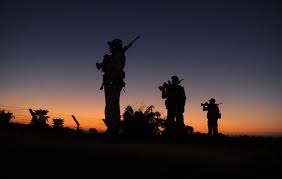
Kolkata, June 30: For a few hours between Thursday night and Friday noon, a website error dissolved one of the world's great divides - between civilian and military.
An Air India flight chartered for the Border Security Force (BSF) found its way into the regular bookings section of the airline's website, allowing civilians book their seats in the exclusive military-only aircraft. One of those who had logged on to book a seat on AI-3255 - the Silchar-Kolkata flight on July 8 - was Keith Menezes, the director of a tea company. Menezes would have probably had to return from Silchar airport had he not called up the station manager to reconfirm the flight before making the payment. "I had booked a flight to Kolkata for June 29. But my trip got postponed and I tried on Thursday night to change the ticket to July 8. Since the AI website doesn't accept flight changes, I decided to first book the flight and then make the cancellation," Menezes said.
When he logged on - unaware like most others that an AI flight number beginning with '3' indicates it's chartered - AI-3255 was one of the options along with two other flights.
No confirmed bookings on BSF flight
Director of a tea firm Keith Menezes said: "Three flights figured on the website - AI 3254 at 7.30am, AI 9706 at 9.20am and AI 754 at 3.15pm. I opted for the first flight and was about to pay for when I decided to do it offline. When my agent went to the onsite counter, he was told no seats were available as it was a chartered flight. Why did they have to put us through this harassment?"
The duty manager of the airline in Kolkata, P K Dutta, was shocked by the flight being posted on the bookings section. "It should never have figured on the website. No seats are available on the flight," he said. The flight was taken off the website around Friday noon.
An Air India spokesperson admitted the mistake. "As soon as we were alerted about the error, we called up our Delhi office and got it rectified. However, there were no confirmed bookings on the flight. Else, it would have led to complications. Any Air India flight starting with the numerical '3' is chartered," he said. Air India operates chartered flights for the Indian Army, the BSF and the Reserve Bank of India.





Comments
Add new comment